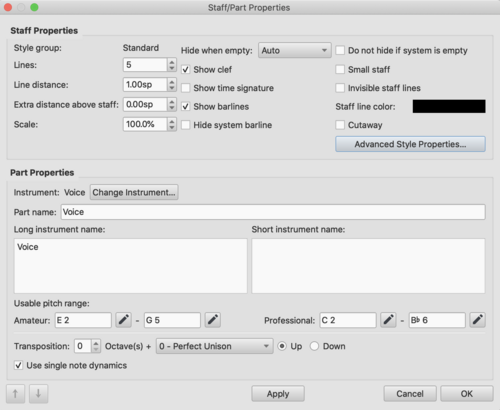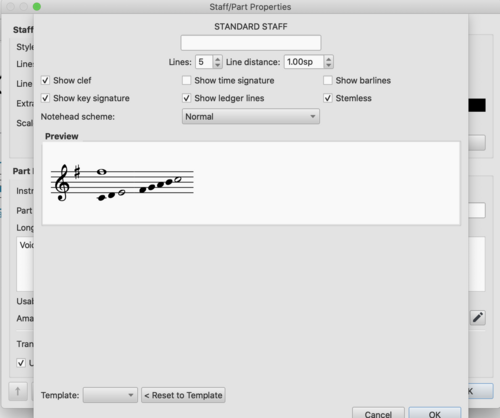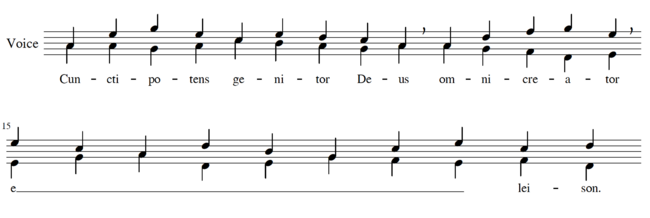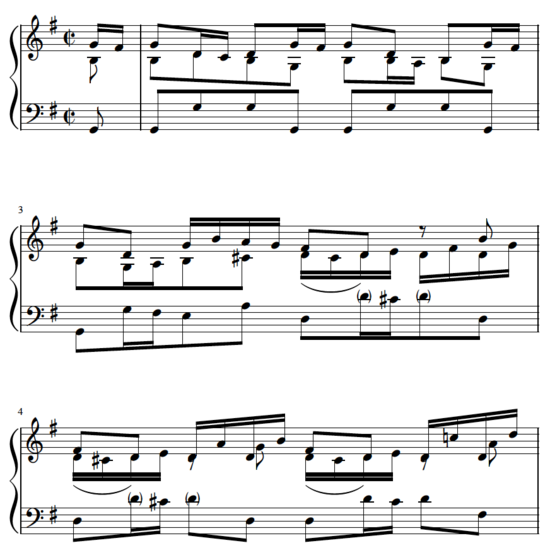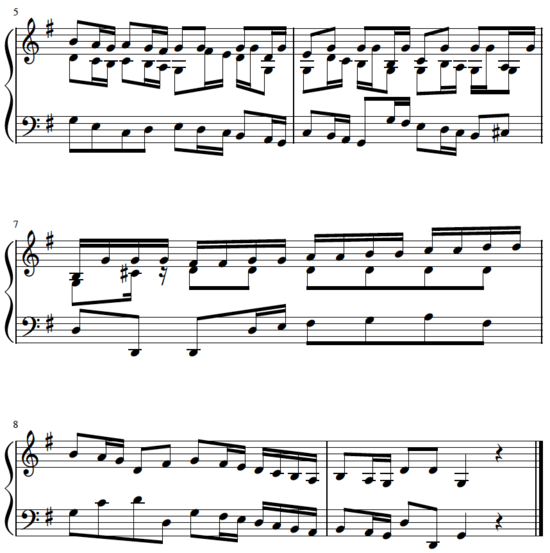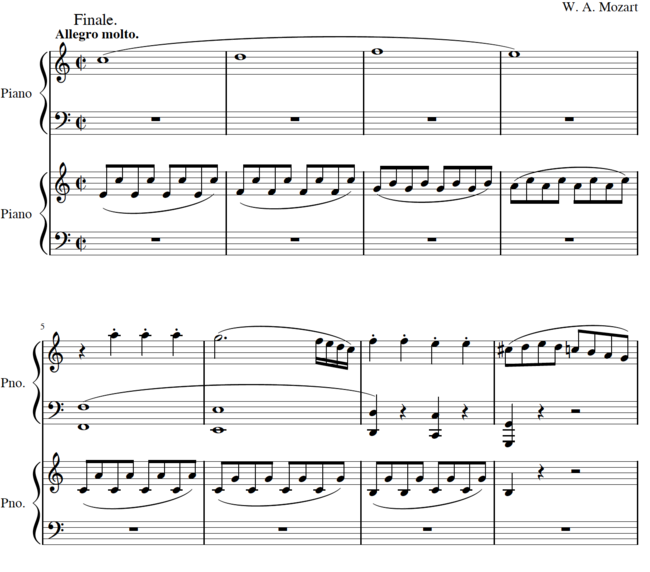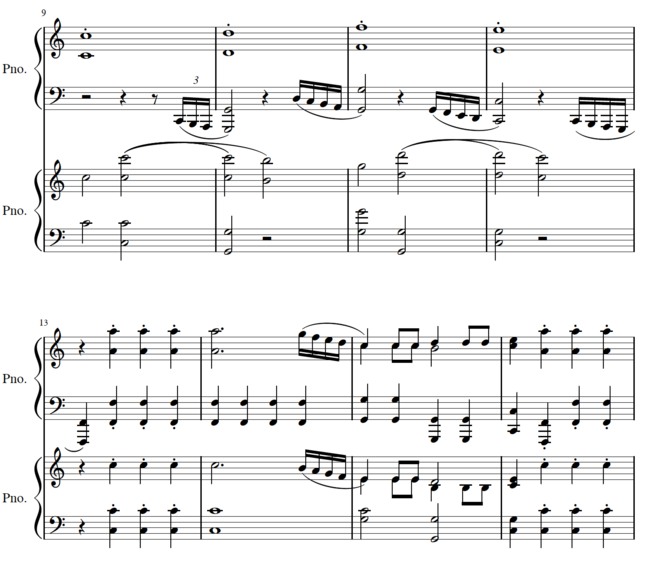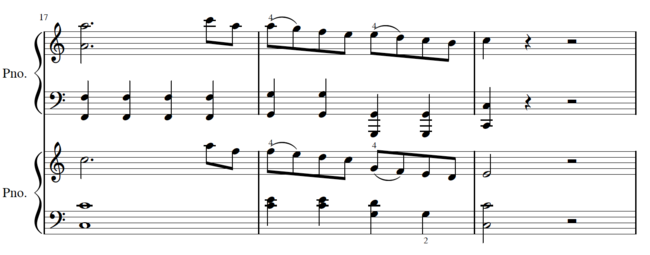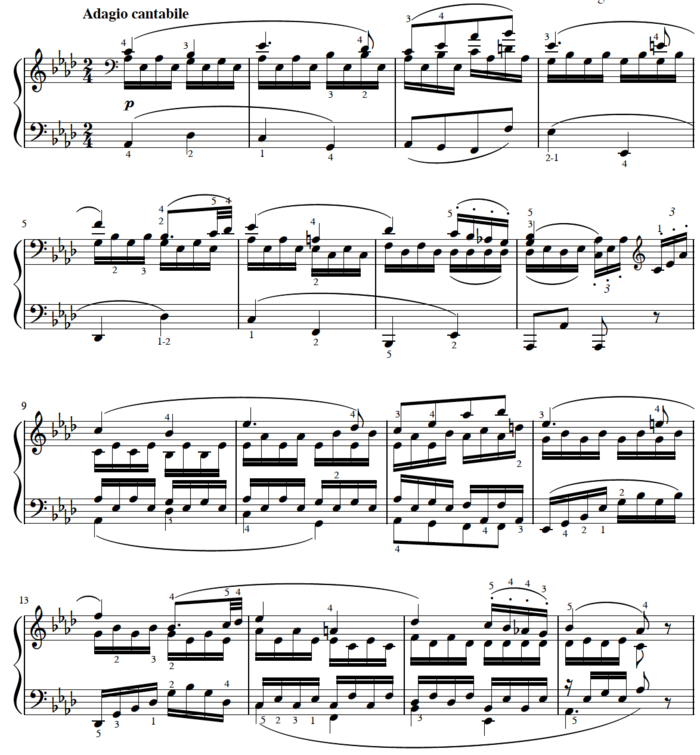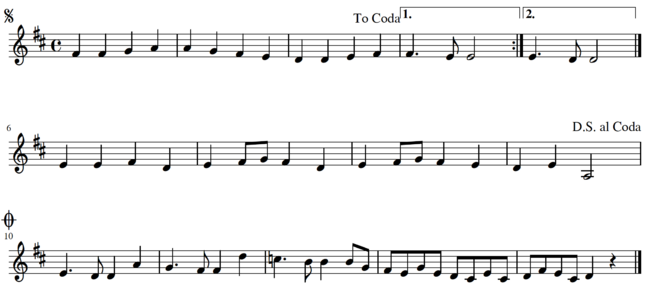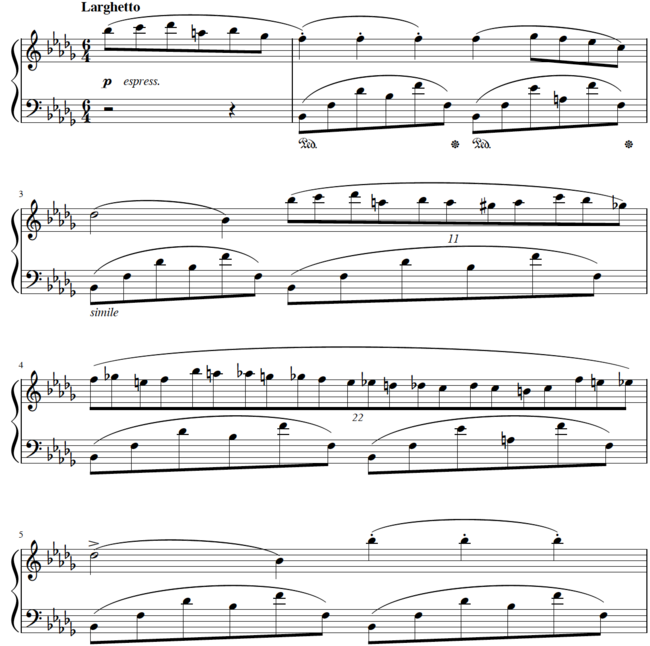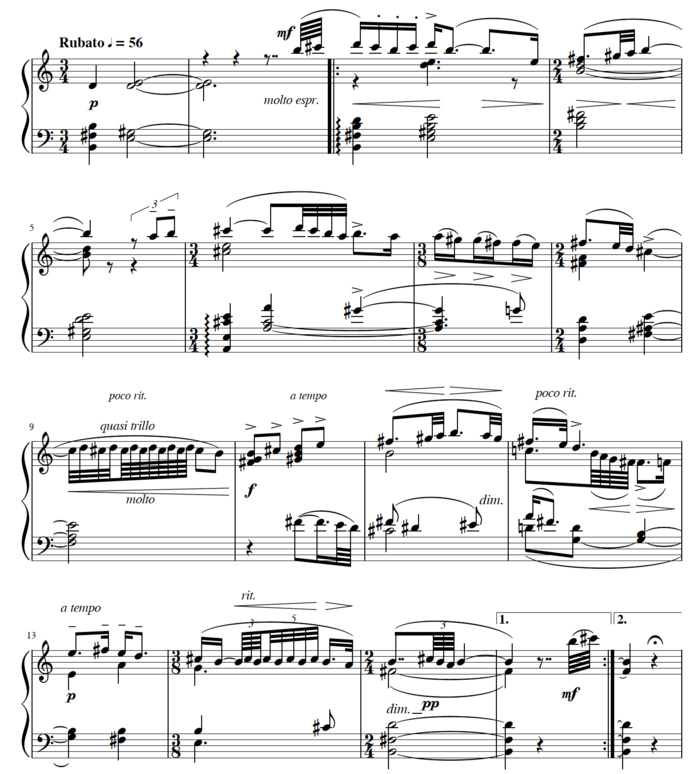Musescore Supplement
Musescore Examples: These exercises require basic knowledge of encoding. Each exercise includes a new tool or two! The MuseScore "Play" function is also recommended.
Vocal Music in MuseScore
Early Vocal Music in MuseScore
Example 1: Chant "Ubi caritas"
Tools you need:
- Choosing an instrument (voice – which may or may not automatically add the optional vocal tenor clef on the clef)
- If not, use “clefs” from the palettes. (click the original clef then double click the treble clef)
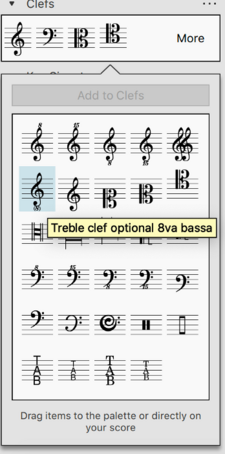
- I prefer using ¼ for the time signature for the sake of spacing.
- The time signature, stems, and the bar lines can be made invisible by selecting all -> staff/part properties -> advanced style properties.
- Review: Slurs and texts from the “Octaves, Slurs, Fingerings, and Text”
Example 2: Two-Voice Organum "Kyrie, Cunctipotens genitor"
- New: Spacing (Press Enter)
- Review: Notes, Lyrics
- Review: Chant (Hint: Staff/Part Properties)
Example 3: Two-Voice Polyphony = Excerpt from "Duo Agnus Dei II" / Missa de Beata Virgine by Josquin des Prez
- Review: Notes
- Review: Clef change
- Review: Voices/Layers
- Review: Slur
Example 4: Secular Monophony "Sumer is Icumen in"
- New: Dotted notes & rests
- New: Spacing – using “Enter” key
- Review: Notes and Lyrics, Rests
Example 5: Renaissance Polyphony "Jesu, Rex admirabilis" by Giovanni Pierluigi da Palestrina (Open Score)
- Choosing Instruments: Choir – Soprano, Alto, and Baritone
- Taking advantage of same rhythmic values
Example 6: Renaissance Polyphony "Jesu, Rex admirabilis" by Giovanni Pierluigi da Palestrina (Close Score)
- Creating a Close Score
- Multiple layers (Review: “Voices/Layers”)
Baroque-Era Vocal Music in MuseScore
Example 1: Figured Bass = "Dido’s Lament" by Henry Purcell
- New: Figured Bass – Command + G
Example 2: Roman Numeral Analysis = "Dido’s Lament" by Henry Purcell
- New: Roman Numeral Analysis from the menu - Add -> Text -> Roman Numeral Analysis
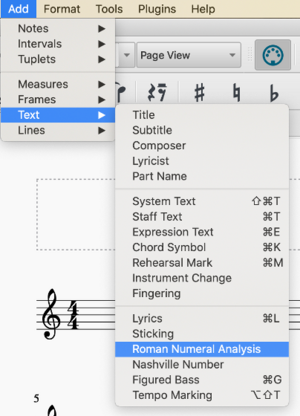
Example 3: Chord Symbols = "Dido’s Lament" by Henry Purcell
- New: Add -> Text -> Chord Symbol
- The Font can be changed so that it recognizes the superscript by changing the appearance from Standard to Jazz in the Style (Format from the menu)
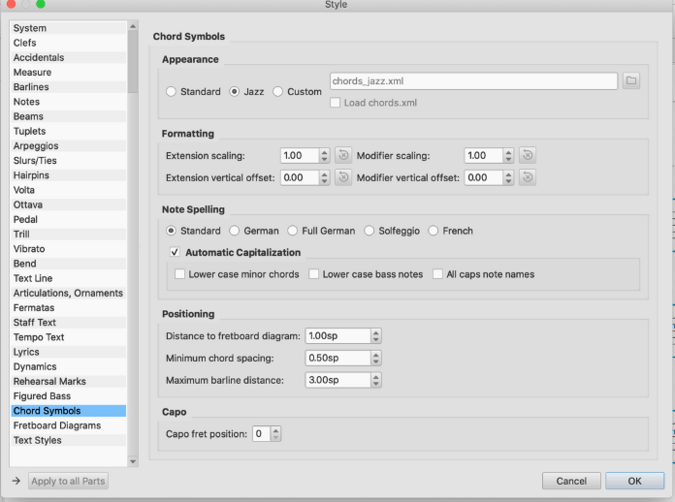
Instrumental Music in MuseScore
Baroque-Era Instrumental Music in MuseScore
Example 1: Brandenburg Concerto No. 3 in G Major, BWV 1048 by J. S. Bach
- Reviewing: Notes, Octaves, Chords, Voices/Layers
- New: Multiple divisions to one note (through layers), parenthesis (accidentals in the palette)

- New: Beams (Palette)

- New: Size adjustment - Format -> Page Settings -> Scaling from 1.764mm to 2.364mm
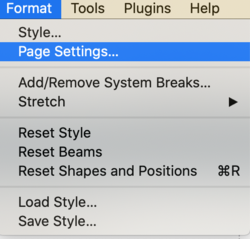
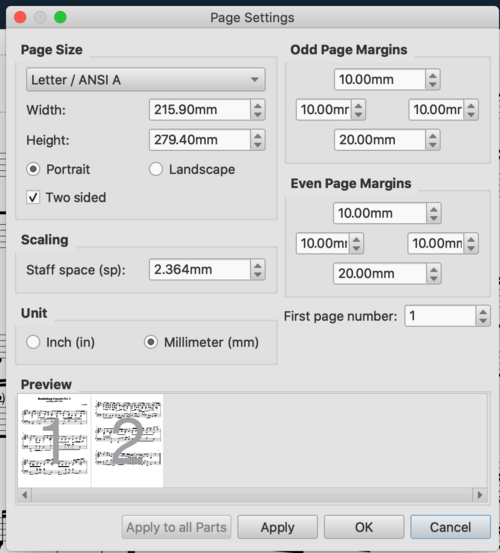
Example 2: Minuet in G by Christian Petzold (Beginning)
- New: Grace Notes (Palette)
- New: Ornaments (can be added by searching “Ornaments” in the Palette box)
Example 3: Minuet in G by Christian Petzold (End)
- Review: Ornaments, chords, voices/layers
Classical/Romantic-Era Instrumental Music in MuseScore
Example 1: Symphony No. 41 in C major, K. 551 (“Jupiter Symphony”) by W. A. Mozart [Arranged for Two Pianos]
- Review: Fingerings
- New: Staccato (Shift + S)
- New: Instrument Choice -> Piano & Piano
- New: Tempo, choose from the Palette and then edit the text by double-clicking
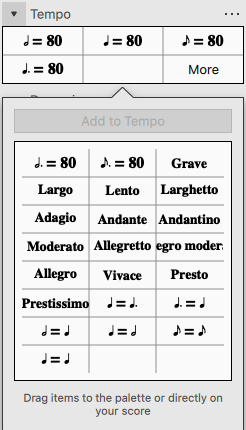
- New: System Text, choose Text from the Palette
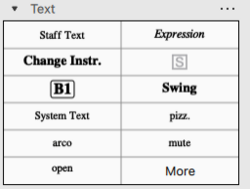
- Triplets = Add -> Tuplets -> Triplet (or command/control + 3)
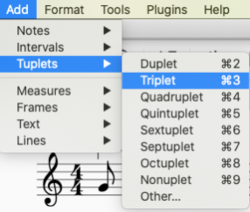
Example 2: Piano Sonata No.8, Op.13 (“Pathétique”) Second Movement by Ludwig van Beethoven
- Review: Fingerings
- Review: Tempo Setting
- New: Temporary clef, drag the clef into the measure (Measure 1 in this case)
- New: Spacing = Format -> Add/Remove System Breaks
Example 3: Melody from Symphony No. 9 by Ludwig van Beethoven
- Hint: "Repeat & Jumps" from the Palette
Example 4: Nocturne, Op. 9 No. 1 by Fryderyk Chopin
- Hint: Tuplets from before, adjust the numbers of ratio to EIGHTH NOTES.
20th-Century Instrumental Music in MuseScore
Example 1: "The Peacock" from3 Hungarian Folksongs from Csík by Béla Bartók
- Review: Repeats & Jumps
- Review: Texts (tempo, expression, staff text, tremolo)
- Review: Tuplets
- Review: Accidentals, Articulations
- Review: Beams
- Review: Dynamics as well as:
- New: Crescendo / Decrescendo (Lines from the Palette)
- New: Time Signature (Palette)
- New: Look up "arpeggio" from the Palette, add to your Palette
- New: Tie = select the note(s), press shift and then + key
- New: Double Dots -> Find the "Basic edited" box on the top left corner, change it to "Advanced"

